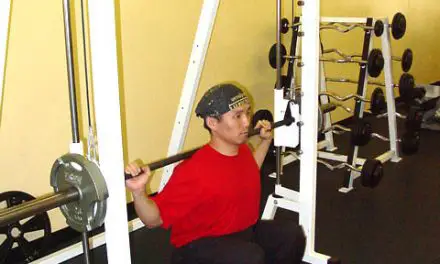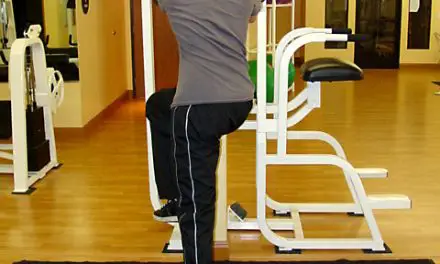Walk into most gyms in the world, and you will most likely find a variety of balance apparatuses stacked neatly on racks or strewn about on the floor. Wobble boards, BOSUs, foam pads, and more, balance training seems to be trendy and it’s hard to ignore. Trainers and coaches have debated on the effectiveness and application of balance training for years, but there are debates based on personal anecdotes and case studies, which can be unreliable. This topic was also examined by fitness professional Eric Cressey on T-Nation last year on the BOSU, which could be applied to most balance exercise tools.
A friend recently shared a blog by the Gray Institute on Facebook talks about balance training. The blog seems to have a few good ideas, yet it provided no citations to its claims. “Whether the goal is rehabilitation from injury, improved performance, or injury prevention, training regimens should include a component of exercise on unstable surfaces.”
Does balance training really improve performance, prevent injury, and help those in rehab a speedy recovery? What is the current scientific evidence for the effectiveness and efficacy of balance training in relation to injury prevention or improving performance? Is balance training a general method of training or does it still follow the SAID principle (specific adaptation to imposed demand)? Let’s look at what the current scientific evidence says.
Does Balance Training Improve Athletic Performance?
In the public’s mind — and some trainers — an example of “functional training” is someone doing barbell squats on a stability ball. which is supposed to improve athletic performance. In reality, this is more like asking for an injury or a lawsuit.
The evidence that supports the idea that strength training on unstable surfaces can improve athletic performance is somewhat mixed and should be evaluated with scrutiny. The most recent systematic review and meta-analysis published in Sports Medicine that examined 22 qualified studies found that healthy teens, young adults, and older adults who did balance training had better muscle strength than the control group, which performed “no training or regular training only.” (1) There is no data for healthy middle-aged adults.
When balance training is compared to strength training on a stable surface, however, the latter shows better strength gains than the former. The authors did not find evidence that support their hypothesis that balance training are better in muscular strength training among youths. “We conclude that the application of STU [unstable surface training] compared with STS [stable surface training] has limited additional effects on measures of muscle strength, power and balance in healthy adolescents and young adults. Therefore, the use of unstable as compared with stable surfaces during strength training is only partially recommended,” the researchers concluded.
A major limitation of this review is the low number of studies that examines the effects of strength between unstable and stable surface training. Therefore, current evidence indicates that strength training on unstable surfaces is not necessary to improve muscular strength.
In terms of improving ankle proprioception, a recent study published in the European Journal of Applied Physiology found that balance training have little effect in doing so. In fact, the authors theorize that other body parts, such as the muscles in the hips and lower trunk, may provide proprioceptive feedback instead of the ankles to provide better balance and stability.
“Results from the present study showed that exercises at unstable surfaces do not challenge peripheral ankle proprioception in maintaining balance. It is more plausible that exercises on an unstable surface challenge other proprioceptive systems or body regions, or the capacity of the central nervous system to shift the weight of the individual sources of information,” the authors concluded.
Does Balance Training Prevent ACL Injury?
There seems to be more studies relating to unstable surface training and knee injury prevention. Injury to the anterior crucial ligament (ACL) in the knee is one of the most common type of injuries among most athletes. A 2015 systematic review and meta-analysis published in the British Journal of Sports Medicine examined two interventions, balance training and static stretching, for ACL injury prevention. Among the 13 studies that were qualified and reviewed, the researchers found that while such prevention programs have been shown in previous studies and their analysis to be effective, there are no clear recommendations for training program components, such as duration, frequency, and intensity. Their analysis indicate that such programs are better for non-contacting injuries rather than those cause my physical contact. (3)
They also found that large amounts of balance training is “unsuccessful” for reducing all injury rates and increase the odds ratio of injury while static stretching has an opposite effect. However, one small study that they cited found that balance training with higher intensity and duration may have more positive effects. (4)
The biggest problem with the studies they examined is that the methodology are not clearly defined in which training volume was not accounted for. The lack of consistency made it difficult for them to determine the results. There was also a risk of publication bias because there was a lack of inclusion of unpublished, small studies with insignificant findings, which may change the current position of balance training and static stretching on ACL injury prevention.
“While specific duration and emphasis recommendations cannot be made as a result of these analyses, the overarching theme is that some form of prevention training is better than nothing; however, the composition and duration of the optimal prevention programme is still unknown.
“Consistent with previous analyses, the effectiveness of ACL prevention programmes may improve as balance training is de-emphasised and static stretching is emphasised. However, given the small number of studies, and the lack of detail regarding the intensity, etc, of various components, considerably more work is needed to determine which combination of programme components, and the duration and intensity at which they are
delivered are most effective at reducing injury risk. Further research will help shape future prevention efforts, as more information regarding volume and training emphasis is uncovered.” ~ Taylor et al. (3)
More recent studies that examined this issue in ACL injury were published after this review was published. One that caught my interest is a study on 39 Division I NCAA female athletes where each athlete performed a single-leg drop onto solid ground and a BOSU. The authors’ hypothesis is that higher muscle activation ratio between the quadriceps and hamstrings can help reduce the risk of non-contact ACL injuries. In their experiment, the ratio between both muscles’ activation is lower in the single-leg drop exercise onto the BOSU than landing on the floor. However, landing on BOSU has reduces knee flexion, which is considered as an “undesired effect.” (5)
It seems like the jury is still out on whether balance training could reduce ACL injuries or not. While it may take a dozen or so more higher-quality studies and another systematic review to evaluate the evidence, trainers and coaches should use their best judgment based on not only the current evidence, but also each client’s or athlete’s condition and goal and integrating other types of intervention to reduce the risk of ACL injury.
Does Balance Training Have a Place in Recovery ?
It seems like patients recovering from a lower-limb injury, stroke, and various types of neurological and joint diseases could benefit more than athletes and healthier populations from unstable surface training. In their review, Behm and Colado stated while instability training “dampens” strength stimulus among trained individuals, the effects may be “sufficient intensity for a recuperating muscle.” It may also induce less dramatic changes and increase trunk and limb muscle activation to protect healing muscles and joints.
Recent research on unstable surface training for patients with different ailments have some favorable effects in improving movement, strength, and quality of life, including patients with stroke (7,8) and knee osteoarthritis (9). Unless trainers and coaches are also licensed physical therapists or similar qualified professionals, they should not be playing doctor when addressing these issues.
Balance training isn’t a total waste of time. It is when trainers, coaches, and gurus take the evidence out of context, step beyond their scope of practice, and/or steer away from their clients’ or athletes’ goals that unstable surface training becomes a potential problem. Like other training modalities, unstable surface training follows the same basic principles of exercise program design. Understand those basics first, and the methods will follow.
References
1. Behm D, Muehlbauer T, Kibele A, Granacher U. Effects of Strength Training Using Unstable Surfaces on Strength, Power and Balance Performance Across the Lifespan: A Systematic Review and Meta-analysis. Sports Medicine. 2015 Sep 10.
2. Kiers, H et al. Ankle proprioception is not targeted by exercises on an unstable surface. European Journal of Applied Physiology. 2012 Apr;112(4):1577-85. doi: 10.1007/s00421-011-2124-8.
3. Taylor JB, Waxman JP, Richter SJ, Shultz SJ. Evaluation of the effectiveness of anterior cruciate ligament injury prevention programme training components: a systematic review and meta-anal ysis. British Journal of Sports Medicine. 2015 Jan;49(2):79-87. doi: 10.1136/bjsports-2013-092358.
4. Myer, GD et al. The effects of plyometric versus dynamic stabilization and balance training on lower extremity biomechanics. American Journal of Sports Medicine. 2006 Mar;34(3):445-55. Epub 2005 Nov 10.
5. Shutz R et al. Unstable Surface Improves Quadriceps:Hamstring Co-contraction for Anterior Cruciate Ligament Injury Prevention Strategies. Sports Health. 2015 Mar;7(2):166-71. doi: 10.1177/1941738114565088.
6. Behm D, Colado, J. The Effectiveness of Resistance Training Using Unstable Surfaces and Devices for Rehabilitation. International Journal of Sports Physical Therapy. 2012 Apr; 7(2): 226–241.
7. Song MS et al. Effect of Unstable Surface Training on Walking Ability in Stroke Patients. Journal of Physical Therapy Science. 2014 Nov; 26(11): 1689–1691
8. Cabanas-Valdés R, Cuchi GU, Bagur-Calafat C. Trunk training exercises approaches for improving trunk performance and functional sitting balance in patients with stroke: a systematic review. Neurorehabilitation. 2013;33(4):575-92. doi: 10.3233/NRE-130996.
9. Kim K et al. The Influence of Exercise on an Unstable Surface on the Physical Function and Muscle Strength of Patients with Osteoarthritis of the Knee. Journal of Physical Therapy Science. 2014 Oct; 26(10): 1609–1612.
A native of San Diego for nearly 40 years, Nick Ng is an editor of Massage & Fitness Magazine, an online publication for manual therapists and the public who want to explore the science behind touch, pain, and exercise, and how to apply that in their hands-on practice or daily lives.
An alumni from San Diego State University with a B.A. in Graphic Communications, Nick also completed his massage therapy training at International Professional School of Bodywork in San Diego in 2014.
When he is not writing or reading, you would likely find him weightlifting at the gym, salsa dancing, or exploring new areas to walk and eat around Southern California.





